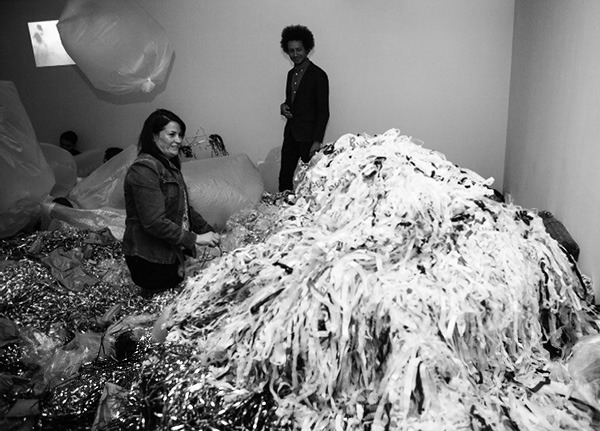
MYKITAS EPOCH—HABITAT
first performed on July 5, 2016
SAIC Gallery X, Chicago, IL
performed twice in 2016
CV PETERSON
Chicago, IL
427232970c427232970v427232970.427232970p427232970e427232970t427232970e427232970r427232970s427232970o427232970n42723297024272329702427232970@427232970g427232970m427232970a427232970i427232970l427232970.427232970c427232970o427232970m
cvpeterson.com
MYKITAS EPOCH—HABITAT
CV PETERSON
“MYKITAS EPOCH—Habitat” was the premier installation and performance of the MYKITAS EPOCH series, a work that explores the plausible trajectory of the Earth after humanity is extinct. It envisions a future in which non-biodegradable wastes, such as plastic and Styrofoam, are the legacy of Homosapiens, and become the non-renewable food source for the new sentient beings (Mykitas Epochs) that roam the planet—a species evolved from strains of fungi that are, even now, beginning to adapt to consume certain plastics.
In this exhibition the public was given the opportunity to briefly enter this fictional future through an interactive installation and live performance. A 20 X 22 sq. ft. room was filled to knee height with non-biodegradable trash—used packing material, plastic bags, plastic wrap, pom-pom material, plastic bottles, etc. Red and amber lighting gels created a feeling of heat and a small projection high on the wall to the far left of the space played a video, supposedly from the point-of-view of the creature. I was stationed on the opposite side of the space where I performed as the Mykitas Epoch entity for three hour durations.
However, the focus of the piece was more on the experience as a whole, and on the reaction of the audience. There was a prominent crunch and pop as people waded through the plastic and batted air filled trash bags as though they were balloons. Others sunk down into the material, disappearing out of sight, forgotten as they slipped into what could be considered a meditative states—some even drifting into sleep. The installation muted sound and concealed individuals’ bodies to the point where my newcomers had to be warned to be careful of where they stepped. Occasional movements from myself, as the futuristic fungal creature whose habitat they had entered, brought awareness to the fact that they were not alone.
Performance artist Vanessa Dion Fletcher, after experiencing the piece, concisely summed up the feeling I wished to evoke: “Lying in the plastic made me feel like I was in a plastic coffin that society had built for itself.” She, like many others, spent a long period of time calmly submerged in this legacy of our species.